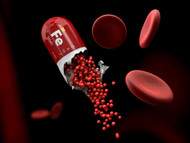Iron Group and Biomarkers: MVC, Hematocrit, RBC
Posted by Pharmics on 27th Oct 2023
In parts one and two of this multi-part blog series, we've gone over some of the most important biomarkers that are considered part of the Iron Group, or a collection of different blood indicators that help understand the body's iron status. The Iron Group and its various markers are vital for knowing about iron in your body, and knowing some specifics on the most important such biomarkers can be important.
At Pharmics Inc., we provide clients with the very best iron supplements on the market, helping them deal with iron deficiency or anemia issues of any kind. Today's final entry in this series will go over a few more of the important Iron Group biomarkers to be aware of, plus what each is describing and how to consider it.

Mean Corpuscular Volume (MVC) and Hemoglobin (MCH)
Two important averages that are part of the Iron Group are MVC and MCH, which stand for Mean Corpuscular Volume and Mean Corpuscular Hemoglobin. These averages refer to the size and average content of red blood cells in the body - specifically, how much hemoglobin is present in them.
Low values for either can indicate iron deficiency or anemia, while high values may suggest a different issue with your red blood cells. As with other biomarkers, the specific values that are considered low or high may vary from person to person.
Hematocrit
When looking to measure the portion of blood that contains red blood cells, we use a metric called hematocrit. This measures the percentage of blood that is made up of red blood cells, with normal values ranging from 35-50% for adults depending on gender and other factors. Low values can be associated with anemia or iron deficiency, while high levels may suggest dehydration or a number of other issues.
Red Blood Cells and Red Blood Cell Distribution Width (RDW)
Another important part of the Iron Group is red blood cell counts and RDW, which stands for Red Blood Cell Distribution Width. These measures give an overall picture of the health and functionality of your red blood cells - RDW specifically looks at how uniform in size they are. Low values for either can suggest anemia or iron deficiency, while high values may indicate other underlying conditions.
And for those unaware, red blood cells are vital for delivering oxygen to your body's tissues and organs, making them a crucial part of overall health. Under standard conditions, red blood cells will be produced with constant uniformity and very little deviation - but any changes in size, shape or amount may signal underlying health issues that need to be addressed.
Thank you for joining us for this multi-part blog series on the Iron Group and its important biomarkers. To learn more about iron levels and how Pharmics Inc. can help with related supplements, reach out to our team today. We are dedicated to providing the highest quality iron supplements available to anyone in need.
Check with your physician before taking an iron supplement or giving an iron supplement to an infant or any child.
*WARNING: Accidental overdose of iron containing products is a leading cause of fatal poisoning in children under 6. Keep iron containing products out of the reach of children. In case of accidental overdose, call a doctor or poison control center immediately.
Statements on this page have not been evaluated by the Food and Drug Administration. These products are not intended to diagnose, treat, cure or prevent any disease.

